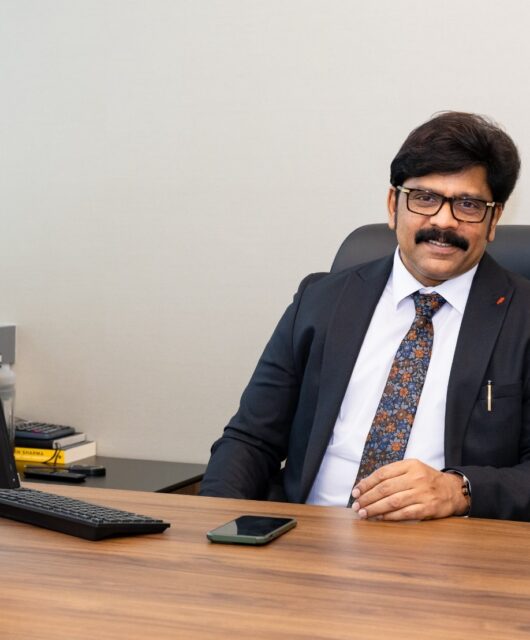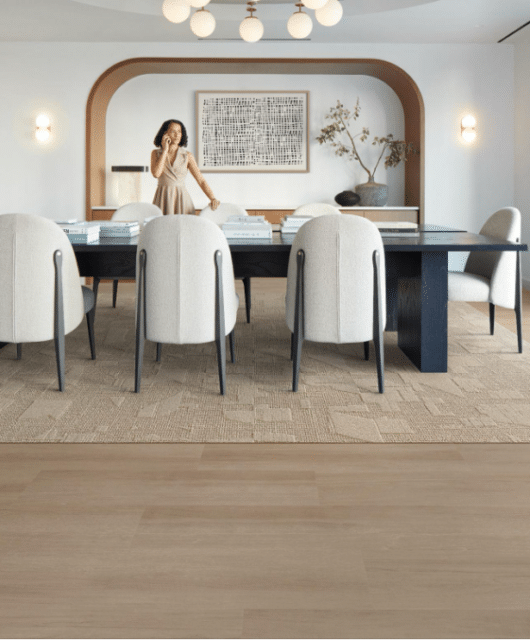 Victoria Zaera, responsible of the industrial and energy department in ASCER-Tile of Spain, discusses how sustainability is critical to the industry’s development.
Victoria Zaera, responsible of the industrial and energy department in ASCER-Tile of Spain, discusses how sustainability is critical to the industry’s development.
Sustainability has long been a top concern in the creation of smart cities, aligning with the global push to cut carbon emissions. The Middle East area has made tremendous advances in construction and design, inspiring global creativity in addressing environmental issues.
One area of particular importance in the construction industry is the Spanish Ceramic sector, which is leading the way in producing truly sustainable tiles. These tiles offer not only cost-effectiveness and durability but also environmental friendliness, benefiting both the infrastructure and its occupants. The rising demand for Spanish Ceramic tiles in recent years has been driven by their known durability and energy economy, resulting in a lower environmental impact. However, the pursuit of sustainability does not end there. The Spanish ceramic tile sector has the opportunity to incorporate more characteristics that fit with net-zero goals through continual innovation and design advancements.
Embracing digital innovation and reducing energy usage
The global Ceramic Tiles Market was estimated at USD 227.9 billion in 2023 and is expected to witness a CAGR of 7.1% from 2022 to 2027. Known to be an energy-intensive industry, Spanish manufacturers of ceramic tiles are harnessing the power of digital innovation to minimise energy consumption. And due to the current environmental situation and the responsibility of the construction market, the ; Spanish ceramic tile makers have a responsibility for sustainability and innovation which is being one of their priority issues.
In the Middle East region particularly, this industry is increasingly leading a trend for integrating interior design to enhance up the sustainable drive. Widely used in residential and commercial projects, Spanish ceramic tiles dominate the design game for their aesthetic appeal, durability, and versatility. With such impressive dynamics, ceramic tile manufacturers are paving the way for a greener future that goes beyond the obvious carbon footprint. The crossover to digital printing is revolutionising the design possibilities by allowing intricate patterns, realistic textures, and replication of various materials like wood and stone without much of a carbon footprint drill. Whether it´s tech-enabled walkthroughs of projects for client previews or the latest technology to offer a variety of choices within the realm of sustainability; the Spanish ceramic tile industry, Tile of Spain, is putting its best plan forward for the Middle East’s net-zero targets.
Responsible resource consumption
Undoubtedly, manufacturers should prioritise eco-friendly practices, incorporating the use of recycled materials and obtaining certifications to validate their commitment to sustainability. Rethinking current manufacturing processes is another crucial step towards reducing environmental impact. Implementing initiatives such as repurposing remnants as raw materials for new products can significantly reduce waste generation. It is also important to recover as much clay waste as possible before firing to minimise the need for virgin raw materials and decrease environmental impact.
In terms of water usage, it is worth noting that 80% of the water used during Spanish ceramic tile manufacturing evaporates, while the remaining 20% can be recycled and reused to achieve zero water discharge. Developing reclaiming methods and utilising slurries and water-based suspensions can be effective in replacing the water previously required in the manufacturing process, thereby minimising dumping.
Study sustainability for enhanced net-zero vision
A product’s environmental profile throughout its lifecycle must be examined from a global perspective in order to increase sustainability. When a product uses its raw resources effectively and has a minimal impact on the environment over the course of its life, it is said to be environmentally friendly. Additionally, it must perform flawlessly without providing a risk during usage, and when disposed of or recycled, it must have no negative effects on the environment.
Leading by example, the Spanish ceramic tile industry has analysed the production process of ceramic tiles for decades and pioneered obtaining the first Environmental Product Declarations (EPDs). The Environmental Product Declarations are Type III labels according to the ISO 14020 standard, which provides information on the environmental impact of a product throughout its lifecycle. While the certification system is currently voluntary, it is likely to become an integral feature in promoting the competitiveness and environmental awareness of brands globally.
Advancing sustainability through industry leadership
The Spanish ceramic industry is renowned for its unwavering commitment to sustainability and its remarkable energy efficiency ratios, outperforming other tile sectors internationally. Through dedicated efforts, the Spanish industry has embraced innovative techniques to optimise traditional processes, placing a strong emphasis on eco-friendliness. As a result, it has achieved the highest energy efficiency ratio per unit of output among global tile industries.
Spain and Italy are both leaders in energy efficiency in ceramic tile manufacture, outperforming the rest of the European Union. Their commitment to sustainability has enabled them to thrive in terms of reducing environmental impact and optimising resource utilisation.
An environmentally friendly product has low raw material consumption, a small environmental imprint, high functionality, and poses no risks during use or disposal. Tile of Spain, a Spanish ceramic tile company, is an excellent example of a sustainable material that prioritises these factors, assuring a sustainable and responsible approach to product creation.







